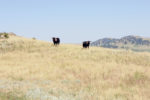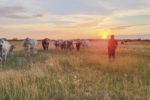Cattle Grazing
Taking stock of the quantity and quality of forage available on your pasture during early spring greenup will have a lasting impact on your herd’s health and the land’s long-term productivity.
Read More
Economically utilizing virtual fence for strategic natural resource management
Producers still have a lot of questions about how feasible virtual fencing is on their operations. Ongoing research in the West seeks to demonstrate how the technology can help with labor and natural resource management.
Read More
Proper timing of pasture turnout critical for optimal forage production
Grass is our primary source of forage, whether it be rangeland, pasture or hay. It is important to carefully select species to plant because not all grass is created equally.
Read More
How to use a forage calculator
Forage calculators can be very valuable tools for producers during the grazing season, but choosing one that is adaptable to your operation is key.
Read More
SPONSORED
Noble “Essentials” courses deliver new ideas and practices plus a regenerative network
Farmers and ranchers share what they learned in Noble’s first year of regenerative courses as the initial 2024 class offerings are announced, starting with New Braunfels, Texas, this February.
Read More
Dormant-season grazing is key to controlling invasive annual grasses
Targeted dormant season grazing can help reduce invasive annuals and help improve the density of native perennial plants.
Read More
A critical profit: Effectively managing late-season grazing
It is more economical to feed a protein supplement to cows when forage quality is lacking in late fall rather than trying to recoup BCS before spring calving.
Read More
Winter grazing of medusahead offsets hay needs, reduces wildfire fuel
Researchers have found that late-fall and winter grazing of the invasive medusahead grass can provide both extra forage for ranchers and reduce potential wildfire fuel.
Read More
What is blue-green algae, and how do I deal with it?
Cyanobacteria can be a deadly force to be reckoned with. Good management practices and careful monitoring of water quality are critical to keeping livestock away from toxic water sources.
Read More













